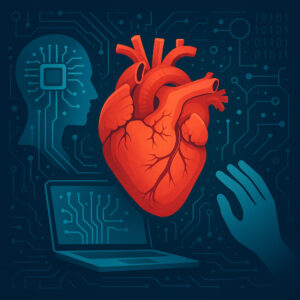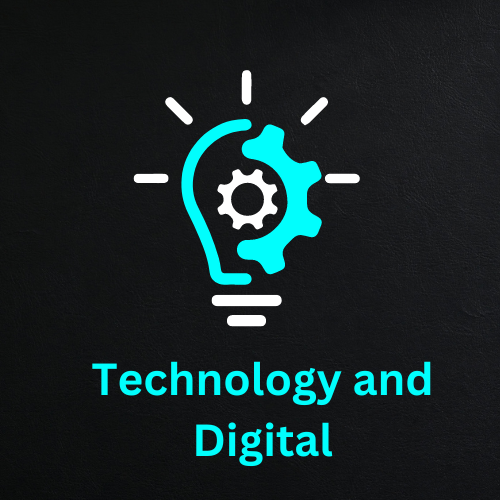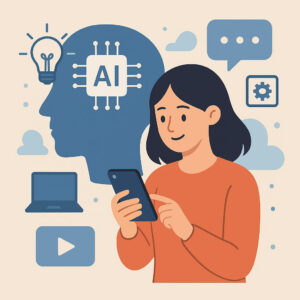Technology and the Heart of Humanity

There was once a time when tools were simple — a wheel carved from stone, a spark born from friction. Yet even then, behind every invention, there was a heartbeat. The rhythm of creation has always pulsed through human history, guiding us from firelight to fiber optics. Today, as machines think, speak, and learn, a new question echoes through the circuits of modern life: Where does humanity end, and where does technology begin?
The Silent Pulse Beneath the Wires
Technology is often seen as steel and code, as algorithms and data streams. But beneath it all, there is intention — a reflection of the human desire to connect, to understand, to create. Every app, every satellite, every line of code carries a fragment of human thought and emotion. Each is a mirror, revealing both our brilliance and our vulnerability.
Consider the smartphone — a device that can hold the world within its glass frame. It beats quietly in our pockets, bridging oceans and cultures. Yet, it also hums with the whispers of loneliness, of digital fatigue. In its light, we find both connection and isolation. Technology does not replace the heart; it magnifies it.
Practical Tip:
Pause before reaching for a device. Ask what intention guides the touch. Connection deepens not in the glow of the screen, but in the awareness behind it.
Innovation as an Expression of Empathy
Every breakthrough in technology begins not with logic, but with compassion. Artificial intelligence was born from curiosity — a longing to understand how minds work. Robotics emerged from the dream of reducing human toil. The Internet was not built to dominate, but to unite. Beneath these marvels lies a quiet truth: technology evolves because humanity seeks better ways to care for itself.
In hospitals, AI helps detect diseases before symptoms appear. In classrooms, digital learning opens doors for those once left behind. Renewable technologies hum gently across solar fields, their panels catching sunlight like open palms. These are not just feats of engineering; they are acts of empathy translated into function.
Practical Tip:
Designers, developers, and innovators should always ask: “Does this invention heal or harm?” Ethical creation begins with emotional intelligence, not only technical skill.
The Dance Between Machine and Soul
There is poetry in the way humans and machines intertwine. The artist uses a tablet as a brush, painting pixels that move hearts across continents. The musician composes melodies with software that feels like magic. The architect dreams of cities that breathe — buildings alive with sensors, responding to human needs in real time.
Technology is not an enemy of the soul. It is its extension — an instrument, much like a violin, capable of beauty when played with awareness. But when misused or misunderstood, its strings can tremble out of tune. The responsibility lies not in the code, but in the consciousness behind it.
Practical Tip:
To keep the balance, approach technology as a partner, not a master. Let it amplify creativity, not replace curiosity.
When Data Meets Emotion
In this digital era, data flows like rivers — constant, vast, and often invisible. Algorithms predict desires, shape opinions, and craft experiences with uncanny precision. Yet even in this sea of information, emotion remains the compass. Behind every click is a story, behind every search a yearning.
As artificial intelligence learns more about human behavior, it begins to reflect our moral choices. The challenge of this century is not to teach machines to think like humans, but to remind humans to feel despite the machines. A truly intelligent society is not one that automates everything, but one that preserves empathy within the automation.
Practical Tip:
Businesses and innovators can build more authentic products by listening deeply to human emotion — not just measuring engagement, but understanding experience.
The Digital Threads That Bind Humanity
Technology has made the world smaller, yet its impact has expanded our reach. A doctor in Tokyo can guide a surgery in Nairobi through a robotic interface. A student in a remote village can learn astrophysics from an online course. A poet can share a verse and have it read in a thousand languages within moments. This is the beauty of the connected age — the power to amplify human potential across boundaries.
Still, with such vast connectivity comes the responsibility to protect what makes us human. The more we digitize, the more we must humanize. Ethics, empathy, and digital literacy must walk hand in hand. Otherwise, progress risks becoming a tower of glass — gleaming, yet fragile.
Practical Tip:
Citizens and policymakers should promote digital education that includes not only technical skills but also emotional and ethical understanding of technology’s impact.
The Future: Where Heart Meets Horizon
In the near future, quantum computing may reshape science. Neural interfaces might blur the lines between mind and machine. Virtual worlds could expand our realities, creating new forms of art, communication, and belonging. Yet through every phase of innovation, one thing must remain unchanged — the heartbeat of compassion.
The most advanced civilization will not be measured by its devices, but by how gently it uses them. The greatest algorithms will not be those that predict behavior, but those that preserve dignity. As we look ahead, it becomes clear that the future of technology is not artificial intelligence — it is amplified humanity.
Practical Tip:
Leaders and innovators should embed ethical frameworks and human values into every stage of development. The goal is not to outsmart humanity, but to uplift it.
The Eternal Echo of the Human Spirit
Every piece of technology — from the first wheel to the latest neural chip — carries an echo of the human spirit. It is a whisper across time, saying, “We were here. We imagined. We built.” This is the essence of progress: not perfection, but participation in the ongoing story of creation.
Technology will continue to evolve. Machines will become smarter. Networks will grow denser. But what must never fade is the warmth within the code — the heart that beats behind every invention. For it is not silicon that shapes the world, but the hands, minds, and souls that mold it.
Conclusion: Keeping Humanity at the Core
Technology and humanity are not rivals; they are reflections of each other. One creates, the other feels. One builds systems, the other builds meaning. Together, they compose the grand symphony of progress — a melody that only resonates when both mind and heart are in harmony.
As society stands on the threshold of yet another digital dawn, perhaps the truest innovation is remembering this simple truth: Technology without humanity is noise; technology with humanity is music.
What does technology mean to you? Is it a tool, a companion, or a mirror? Share your thoughts and stories below — the conversation about humanity’s heart in the digital age belongs to us all.
Call to Action: Let technology serve your highest intentions. Build, create, and innovate — but always with the heartbeat of compassion guiding the code.




